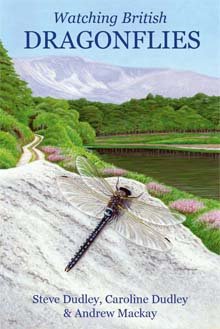Day 2 | Week 1 | A Speyside Wildlife holiday.
After a hearty breakfast we make our way to the quay and board the Guiding Star for our transfer to Tresco. The shelter of the harbour masked the choppy crossing during which a procession of Sandwich Terns passed by the boat.
We land at Carn Near, or Carn Far as it is known in birding circles – ‘’cos it’s the furthest point from everywhere on the island when you need to get to the ferry in a hurry’ I quip. The wind is getting up all the time and we know its going to be difficult migrant hunting in this. Walking around the edge of the Heliport, Alan picks out a Stonechat on a near Rhododendron bush which we all get good views of before it braves the open space of the landing field and gets blown across it by the wind! We search the Abbey Pool for a Baird’s Sandpiper which has been seen until a couple of days ago (‘it does go missing tho’ Steve was told by one of the local birders). No joy. And no other waders to compensate either! The southern end of the Great Pool holds a Mute Swan and a couple of White Wagtails and Alan picks up a Little Egret overhead battling hard against the wind. Rounding the bushes on to Penzance Road, I spy a movement up ahead. ‘Pied Flycatcher!’ I shout as it disappears into a gap in the bushes. Damn! We reposition ourselves and a short wait later and out it pops. ‘Wonderful’ comments Pam. At the Rosefield crossroads we search a few sheltered edges and Charles picks up a second, much whiter and cleaner, Pied Fly.
We walk along Pool Road with more White Wagtails trotting around the bulb fields and the odd Pheasant scratching around. Under one of the Pheasant feeding bins there is a sizeable flock of House Sparrows and Chaffinches feeding in the spilt grain. ‘Kestrel!’ Steve shouts, and whoosh! It flies straight into the feeding flock under the feeder but comes out empty handed.
We arrive at the Great Pool hide for lunch to the sound of a squealing Water Rail which promptly shuts up. Thanks! Along the reed edges there are an assortment of waders probing the soft mud. A couple of Curlew Sandpipers wade belly deep with the heads deep underwater for most of the time. On the odd occasion they lift their bills clear of the water, the long downward curve is very clear. In the shallow water several Dunlin probe with more deliberate action, and about twice as fast as the Curlew Sands. We then pick up three smaller birds on the reed edge with a much faster feeding action – Little Stints. Snipe, Mallard, Teal and several Gadwall are dotted along the reed edge in front of us. One of the trees to our right has a couple of Little Egrets sat in its top. Make that three. No four. Alright – there’s seven!
Out of nowhere a dumpy grey wader appears with the Dunlin. ‘It’s a Knot’ proclaims Steve. The Knot is oblivious to its new found audience as it feeds busily making its way closer, and closer, and closer to us. It’s too close to focus! At such close range the dull grey plumage is transformed with each of the upperpart feathers ending with a thin white fringe and a neat arrowhead which ages it as a juvenile.
About the closest I’ve ever been to a Knot
Amongst the increasing flock of roosting Greenshank and Redshank on the far side, a large, brownish wader stands tall over the shanks – a Black-tailed Godwit.
Searching for Baird’s Sand
Tipped off that the Baird’s Sand sometimes gets on to the beach near the Abbey Pool we make haste. Passing the southern part of the Great Pool again we find the three Little Stints have relocated and we find a lone Little Ringed Plover running around with them. We search the beach. Ringed Plover. Oystercatchers. Various Gulls. More Ringed Plovers. Turnstones. More Ringed Plovers. But no Baird’s Sand.
The wind is beginning to lift sand off the beach and hurl it at us. Time to retreat . . . to the Tresco Gardens café! As we arrive at the café I spot something whizzing around the entrance. Is it a bird? Is it a butterfly? No it’s a large moth, with brilliant red hindwings. It’s struggling in the wind, but eventually settles high up on the wall of a building, almost disappearing with its cryptic markings matching the wall brilliantly.
With the wind strengthening further, and news of a Pectoral Sandpiper on St Mary’s, we head for the earlier boat back. The skipper shows his expertise on the return voyage, hugging the edges of Bryher and Samson for shelter and then riding along the waves rather than slopping through them. A windsurfer speeds past as if he’s powered by rocket fuel. Not to be outdone, a couple of Gannets whiz around, banking with wing tips nearly touching the surface and disappearing in to the troughs between the lines of waves. Fantastic! We see the Guiding Star making its way to Tresco (from St Mary’s), it too disappearing behind the ever heightening waves. It’s more than a little choppy right now! We arrive back at St Mary’s quay. ‘If you’re wet it’s not our fault’ quips the skipper as we climb the quay steps.
We dump our rucsacs at the guesthouse and six of us head off to Lower Moors. With no news since the mornings initial sighting we are twitching in the dark, just hoping that the Pec Sand is still on the pool. We arrive at the ‘new’ hide. Greenshank. Smaller wader – Dunlin. Frantic scanning. No sign. I look across at the other hide where three pairs of binoculars seem to be trained on one area to their right. I try to follow the line of their sight, scouring the reed edge around the hide opposite. I see a movement and ‘got it!’ I announce. I give directions and soon Terry, Bill, Pam, Charles and Alan are all watching a small wader moving through the reeds on the opposite side of the pool. ‘Not great views. Lets get round to the other hide’ I decide. A few moments later we are looking down at an empty reed edge from the other hide. It can’t have flown while we were walking round could it? Did that Grey Heron scare it off? No there it is. But its largely obscured but eventually it comes out in to the open and we all get good views of this American relative of the Dunlin as it pecks away only 40 or so feet from us. It wanders out of view again and it loos like views would be better, albeit slightly further, from the other hide. We nip back round and sure enough, although now 40 or so yards rather than feet, we can see the bird well. I struggle to get a clear view through the tops of reeds to get a good photo, but a few clicks later I’m happy enough given the fading light, moving reeds and a bird which refuses to come out in to the open! We take different routes back, and Charles and Terry are lucky to add Green Sandpiper to their trip lists.
Pec Sand
After freshening up, we take the walk up to Juliet’s Garden for a sumptuous meal and lively banter. What a great way to round off the day!








